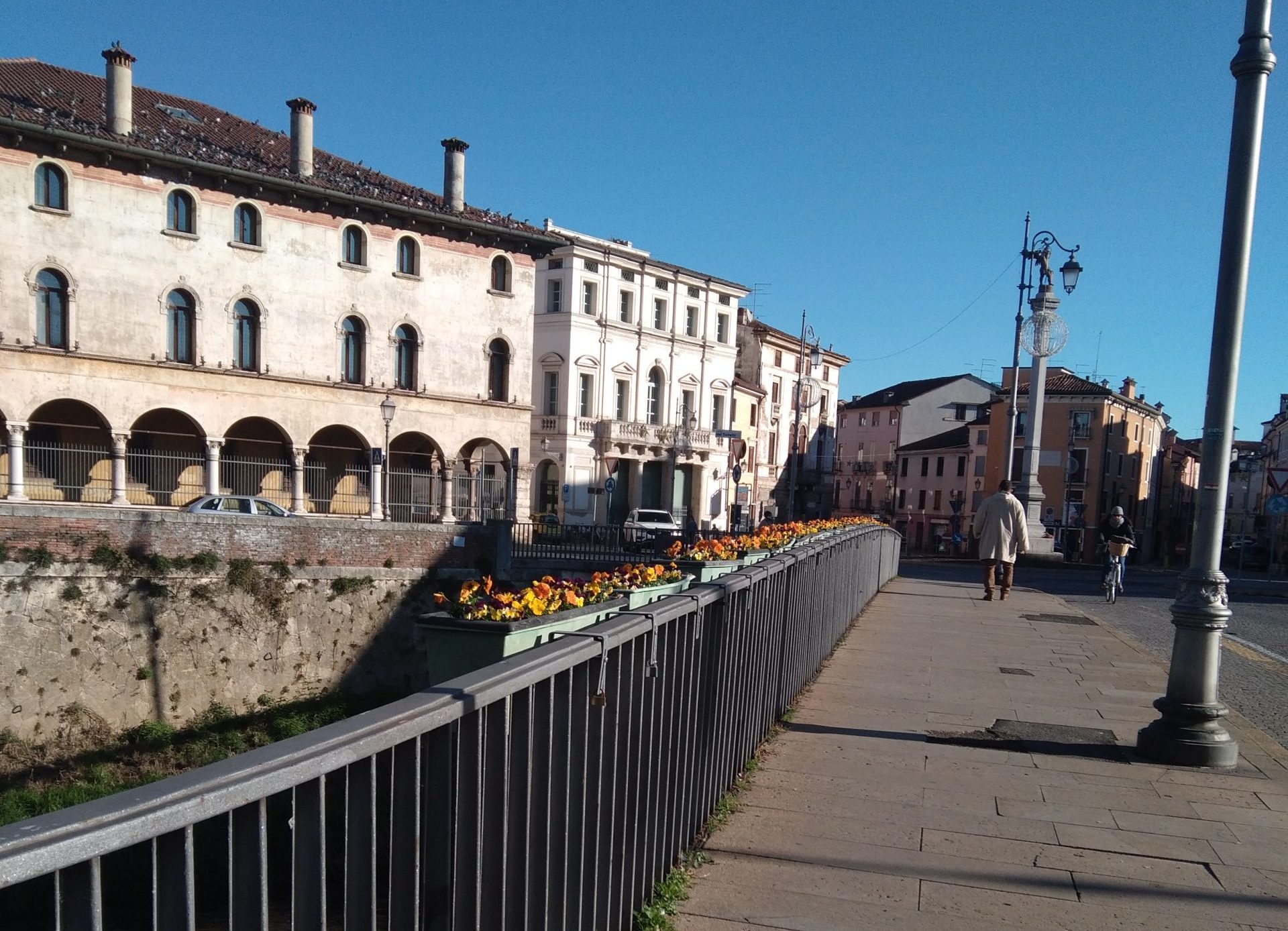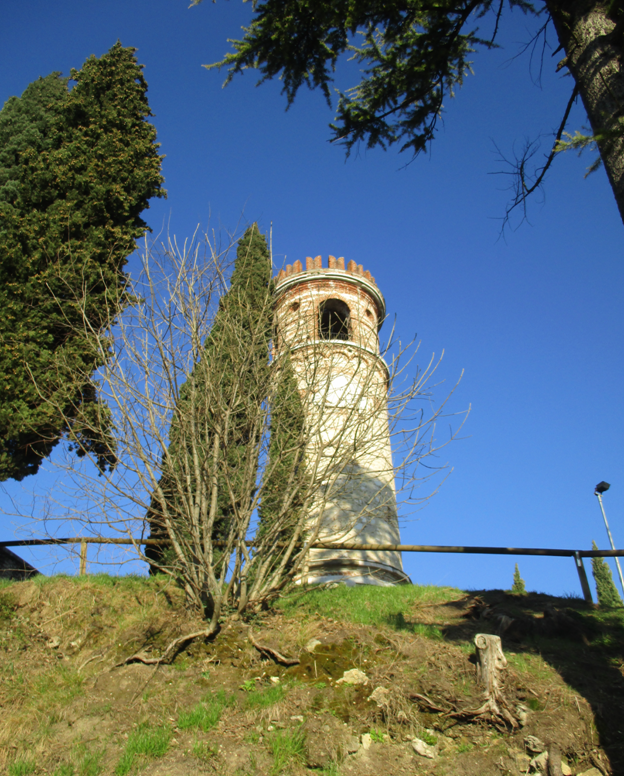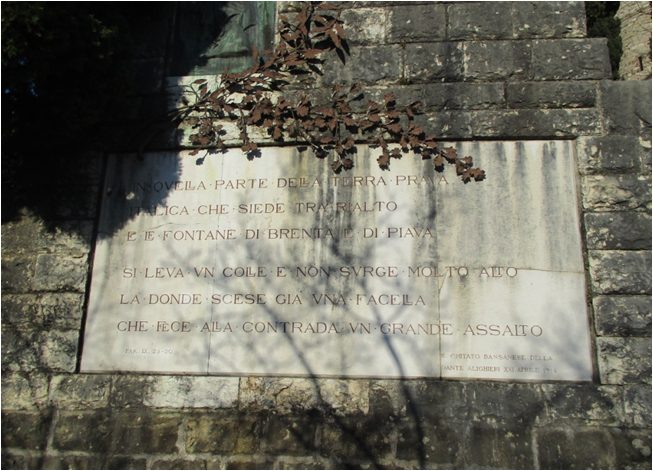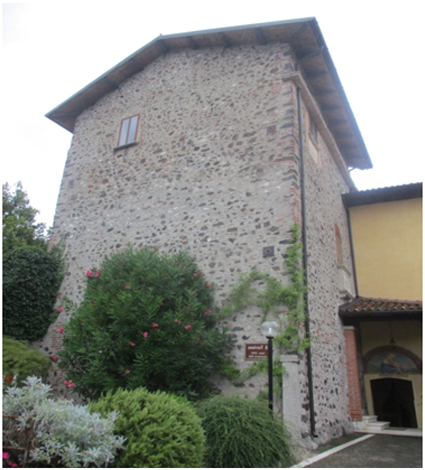
IN COLLABORATION WITH:


PONTE DEGLI ANGELI
CUNIZZA AND EZZELINO DA ROMANO

Dante meets Cunizza da Romano in Paradise, in the sky of Venus, the sky of the loving spirits, who have been gifted with a strong desire to love: indeed she was famous in her life for her many lovers and for being the target of gossip and scandals. Her powerful brother has forced her to get married three times and always got rid of the bulky husbands; and after each wedding, she has been so often forced to move to other places. Nevertheless, Cunizza never gives up on living her life and building her own relationships. The most rumoured one is definitely the love affair with the troubadour Sordello. Yet this instinct that fulfils her spirit, as she aged, turns into generous charity towards those in need, which makes her worthy of earning a place in Paradise. This is where Dante’s intellectual greatness lies: he makes a woman judged scandalous in life into a saint eligible for heaven.
Attracted by her light, the Poet stops to talk to her: after having carefully outlined the territory of the marca trevigiana, located between Venice and the sources of Brenta and Po, the lady describes the hill from which both her and Ezzelino, destined to set fire to the surrounding lands, descended. The Romano di Ezzelino hill, today known as Torre di Dante, near Bassano del Grappa, where a lovely flowery park surrounds a tower that is dedicated to the Poet.
Within that region of the land depraved
Of Italy, that lies between Rialto
And fountain-heads of Brenta and of Piava,
Rises a hill, and mounts not very high,
Wherefrom descended formerly a torch
That made upon that region great assault.
Out of one root were born both I and it;
Cunizza was I called, and here I shine
Because the splendour of this star o’ercame me.
Par. 9^ vv.25 – 33
Cunizza herself mentions the city of Vicenza:
But soon ’twill be that Padua in the marsh
Will change the water that Vicenza bathes,
Because the folk are stubborn against duty;
Par. 9^ vv.46 – 48

The waters of the Bacchiglione will turn red due to the cruelty of men. A dark prophecy predicts incessant struggles between neighbouring cities. History has it that in December 1314 the Guelphs of Padua, who were trying to reconquer Vicenza, were severely defeated by Cangrande della Scala; the defeat was so cruel that stained the Bacchiglione river with blood.
Today it is difficult to locate where the Bacchiglione swamped, as the river has undergone through several changes, caused by nature and men. However, we can imagine it is in the south of the city, at the bottom of the Berici Hills, where Vicenza drew much of its water from a large lake fed by the Bacchiglione located between Debba and Longare.
*****
Ezzelino da Romano enters Vicenza in 1236 from “Ponte degli Angeli”, arriving from Treviso or Bassano. The city, conquered, sacked and devastated, will be part of its vast domain which already included Bassano, Treviso, Verona and the Adige Valley, Padua as well as Mantua. Several chronicles at that time describe the tyrant’s cruelty: legend has it that his mother Adaleta, believed to be a witch, had generated him from Lucifer. In reality, Guelph historiography rages against him, because he is the most important exponent of Ghibellinism in northern Italy, so much that he married Selvaggia, daughter of Emperor Frederick II.
Dante does not take these rumours into account, however he knows the bloody fame of Ezzelino: he therefore places him in the 1st round of the 7th circle, the one dedicated to the violents against the others and the tyrants, covered in the boiling blood of Phlegethon. He is described with dark black hair which increase the malignant suggestion of the figure, and the trait of the forehead, which gives energy to the character:
There I saw some sunken to the eyebrows
…………………… they are tyrants who took to blood and plunder.
And that brow with such jet-black hair
is Ezzelino….
Inf. 12^ vv.100- 105 e 109 -110

I versi del canto IX del Paradiso nel monumento del Parco Dantesco di Romano di Ezzelino


